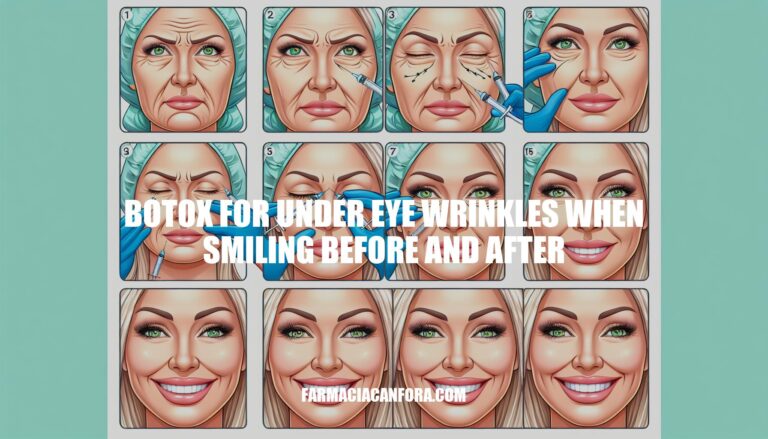


Botox for under-eye wrinkles when smiling is a popular cosmetic treatment that targets fine lines and wrinkles beneath the eyes. This procedure is highly sought after because it helps achieve a smoother, more youthful appearance by relaxing the muscles that cause these wrinkles. Its effectiveness and minimally invasive nature make it a favored choice for those looking to enhance their facial aesthetics.
Botox is a neurotoxin derived from Clostridium botulinum bacteria. It works by blocking nerve signals in the muscles where it is injected, preventing muscle contractions.
For under-eye wrinkles when smiling, Botox is injected into the muscles under the lower eyelid. The mechanism of action involves blocking the release of acetylcholine, a neurotransmitter responsible for muscle contraction. By inhibiting these contractions, Botox relaxes the muscles, reducing the appearance of wrinkles. This results in a smoother under-eye area when you smile.
Here’s a detailed procedure for using Botox to treat under-eye wrinkles when smiling:
Consultation: A board-certified dermatologist or plastic surgeon assesses your skin and discusses your goals.
Preparation: The area under the eyes is cleaned, and a topical anesthetic may be applied to minimize discomfort.
Injection Process:
Post-Injection: The area is gently massaged to distribute the Botox evenly. You may be advised to avoid lying down or strenuous activity for a few hours.
Results: Botox temporarily relaxes the muscles, reducing the appearance of wrinkles when smiling. Results typically last up to three months.
Before receiving Botox for under-eye wrinkles, patients can expect a consultation with a qualified professional to discuss their goals and medical history. The procedure itself is quick, usually taking about 10-15 minutes. The area under the eyes will be cleaned, and a small amount of Botox will be injected into the muscles that cause wrinkles when smiling.
Immediately after the procedure, patients might experience slight redness, swelling, or bruising at the injection site, but these effects typically subside within a few hours to a couple of days. It’s recommended to avoid rubbing the treated area and to stay upright for a few hours post-injection to ensure the Botox settles properly.
Typical results include a smoother appearance of the under-eye area when smiling, with reduced visibility of wrinkles. The full effect of Botox usually becomes noticeable within a few days to a week and can last for about 3-4 months. Regular follow-up treatments are necessary to maintain the results.
Using Botox for under-eye wrinkles when smiling offers several benefits:
Here are the potential risks and side effects of Botox for under-eye wrinkles when smiling:
Common Side Effects:
Rare Complications:
It’s important to consult with a qualified professional to minimize these risks.
Patient Testimonials and Case Studies
Testimonial from Philadelphia, PA:
Case Study from Vancouver, WA:
Patient Experience from Los Angeles, CA:
These testimonials highlight the effectiveness of Botox in reducing under-eye wrinkles when smiling, with many patients experiencing significant improvements after treatment.
Botox is a popular cosmetic treatment that targets fine lines and wrinkles beneath the eyes by relaxing the muscles that cause them. It works by blocking nerve signals in the muscles where it is injected, preventing muscle contractions.
The procedure involves injecting Botox into the orbicularis oculi muscle under the lower eyelid, typically taking 10-15 minutes.
Results are temporary and last up to three months, with potential side effects including pain, swelling, or bruising at the injection site.
Patients can expect a smoother appearance of the under-eye area when smiling, with reduced visibility of wrinkles. Regular follow-up treatments are necessary to maintain results.